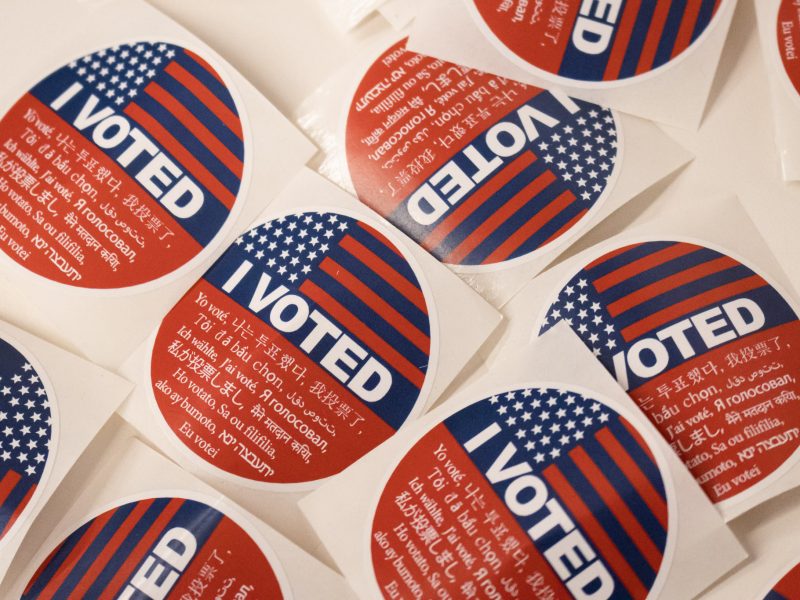Hannah Erickson and Megan Shaw had a life-changing experience after watching a Leslie Nielsen movie two years ago.
The Canadian film Men with Brooms gave the senior student and alumna exposure to the sport of curling, which, despite its emergence in this year’s Winter Olympics, is still relatively obscure in America.
But around these parts, curling is at least on the map.
Soon after seeing the movie, Erickson and Shaw heard about an open house at The Potomac Curling Club in Laurel and ventured up the road to try their hand at the sport that includes sliding 42-pound granite rocks and sweeping ice.
“It was so much fun that we were sucked into it,” Erickson said, “… and the rest is history.”
The club has about 180 members, including juniors and seniors. Erickson is the only student from this university in the club, but there are a number of other college-aged, due-paying members involved.
Erickson even turned curling into a family affair. She got her father to start curling one year ago and he, in turn, recruited her little brother, who was 12 years old at the time. Erickson hasn’t had any problems selling some of her friends on the sport either.
“Everybody who I’ve gotten to try it has stuck around and enjoyed it,” she said.
“It’s a curling responsibility of sorts to try and preach the curling gospel to get others involved,” alumnus player Joey Lopreiato added.
But not everybody has been willing to give curling a shot. Some people laugh at Erickson, some ask if curling was even a real sport and others are just surprised to meet somebody who plays it.
To those people, Erickson says, “It’s a lot harder than it looks, and it’s not as silly as it looks.”
Here’s how the sport works: Curling is played on a 130-foot sheet of ice with a target, known as “the house,” at each end, which measures 12 feet in diameter.
Each team has four players and eight rocks. The rocks, from the game’s birthplace in Scotland, are made of special granite that won’t shatter after collisions with other rocks.
The skip, or captain, calls for a certain shot from whoever is throwing the stone by pointing out a spot with their broom. A shot is thrown by sliding off of the starting block and releasing the stone before the hog line, 33 feet from the block, or hack.
Once it crosses the hog line, two players are allowed to sweep in front of the stone to keep it on its desired path. The rock must pass the hog line on the other side to be considered in play.
Sweeping creates friction in front of the rock and prevents the stone from curving. Sweeping can also add 10-15 feet to a shot, Lopreiato said.
The skip usually acts as the field general by barking orders to the sweepers as they guide the rock down the ice. It’s his or her job to try and determine how to avoid other stones or how to hit other stones into or away from the house.
Scoring is determined by which team has the stone or stones closest to the center of the house. The score is kept in ends, a system similar to innings in a baseball game. Professional competitions have 10 ends, which can last about three hours. Amateur games have eight ends, which usually take two hours to play.
Even club president Dominique Banville, a professor at George Mason University, admits curling only requires two skills: delivering the stone and sweeping.
“It’s relatively easy to learn these two skills, but it takes a lifetime to master them,” she said.
One of the misconceptions curlers want to disprove is that curling is not a physical sport. Guiding the rock up and down the ice while vigorously sweeping works up a good sweat. Sweeping is especially taxing on the arms, Shaw said.
Curling has even been called chess on ice because of the similarities in the tactical maneuvering involved to formulate a plan to win. Just don’t compare it to shuffleboard. Lopreiato frowned on the idea, saying shuffleboard is more a game of leisure – not a sport.
But curling certainly falls under that distinction.
“[Curling] rewards patience, focus and discipline instead of brute strength,” Lopreiato said.
The traditions of the game maintain a very friendly atmosphere between competitors instead of cutthroat battle. Tradition also dictates the winner buys the first round of drinks for the losers during a social period after each game.
Often, players watch curling on television during the social period. During this year’s Olympic curling, a big group huddled around one set and let out a collective gasp after one shot.
This year especially, viewers have something worth watching. The U.S. men’s team was in a three-way tie for 2nd place with curling powerhouses Great Britain and Canada entering the medal rounds.
An 11-5 loss to Canada in the semifinals Wednesday means the U.S. team will face Britain for a bronze medal today.
But for those who aren’t ready to start rooting for curlers just yet, the club offers a chance to play it first. The club, which was founded in 1961 by six Canadians from the Canadian embassy, will be holding open houses Saturday from 1 to 4 p.m. and Sunday from 9 a.m. to noon.
“We welcome everybody and hope that they’re gonna try it because once you try it, you’re hooked,” Banville said.
Contact reporter Brandon Weigel at sports@dbk.umd.edu.


